

 TERRY SMITH reminisces about his connections to this iconic aircraft.
TERRY SMITH reminisces about his connections to this iconic aircraft.
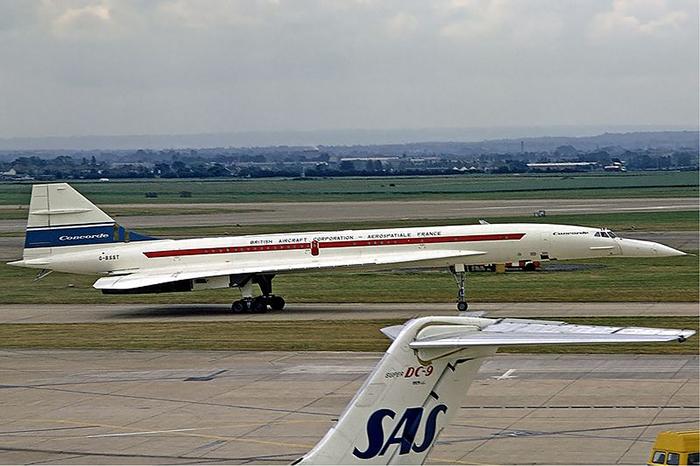
The story of Concorde is a well-documented one and as a child of the 1950s I closely followed the highs and lows of the aircraft. During the early 1960s we heard about a joint venture between the British Aircraft Corporation and Aérospatiale in France, who were going to work together to build a 100-seat airliner that could travel at twice the speed of sound. To us, it almost seemed like something out of the pages of a science fiction magazine. My first sight of the Concorde was to be in 1968, when I visited the factory in Bristol where the first of the British planes were being constructed.
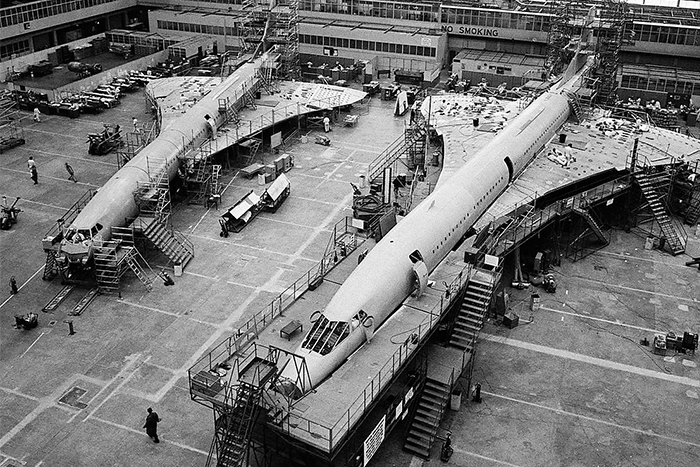
The factory at Filton near Bristol where, as a boy, I first saw a Concorde at least a year before it flew.
My father worked for an engineering company which did a fair amount of work for the aerospace and automotive industries and I often accompanied him on trips during half-term and summer holidays. On one such occasion, I was allowed inside the ex-Bristol Aircraft factory on the understanding I didn’t take photos with my little grey plastic Kodak camera. Along with millions of other people, I watched the British planes take-off live on the BBC with commentary from Raymond Baxter. It was April 9th, 1969, and I think that the whole country felt a sense of pride as the delta winged plane rose from the runway at Filton and the test pilot Brian Trubshaw became a national hero; well he certainly was with all the boys in my school!
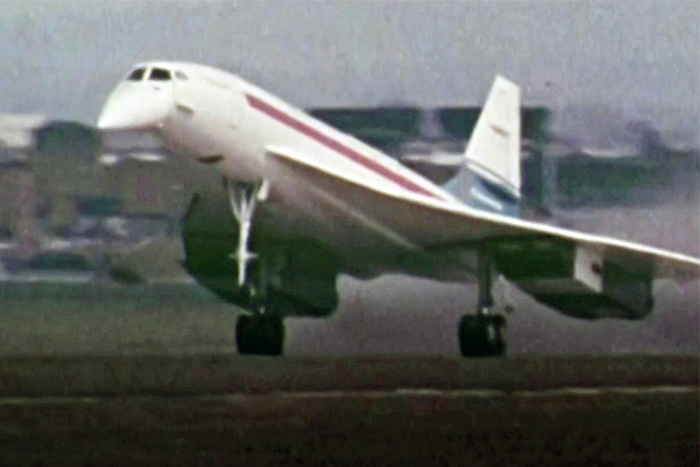
A television screenshot of Concorde 002 taking off from Filton on the 9th April, 1969. Its maiden flight was shown live on the BBC.
As we know, this was just the beginning. Apart from BOAC (who later became British Airways) and Air France, there were no other operators making orders. The commercial success of Concorde was also held back because of the block on the plane being used on the lucrative trans-Atlantic route. While some cited green issues and noise, others believed it was the lack of the US airlines having their own supersonic plane to rival the service offered by British Airways and Air France. This ban was eventually lifted in 1977 with both Air France and BA initially flying services to New York.
Concorde entered the public consciousness as a British cultural icon. At the Live Aid concert in July 1985, Phil Collins performed in London and then travelled to the US by Concorde to play at the Philadelphia show. I saw it myself when a British Airways Concorde full of passengers did a fly-past at the 1986 British Grand Prix at Brands Hatch. It approached from the east, flying over the M20 with its nose and wheels down like it was going to land. Then, just as it passed the crowds, the pilot opened up the throttle and you could see the flames from her 4 Rolls Royce Olympus engines. The Concorde then banked round and, with her wheels and nose up, came back across the race track at subsonic speed at a few hundred feet off the ground!
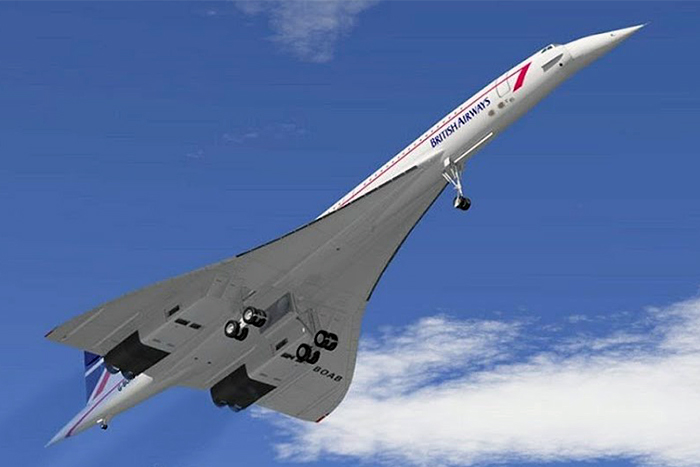
In 1986, a Concorde once made a surprise visit to the British Grand Prix. I can tell you that it flew over the Brands Hatch circuit a lot lower that this!
On another occasion in the mid-1990s I had flown to New York on a British Airways 747. As I left the British Airways terminal at JFK the airline made sure that the two Concordes that were there that day had pride of place, just by the perimeter fence with the noses down. Later in the same decade I had taken my family to Luxor in Egypt, and while people relaxed by the pool there was suddenly this deafening sound. Thinking it was some sort of military aircraft, as the sky crackled with noise, I looked up to see a Concorde make a banked turn over the island to make its final approach to Luxor airport. I have never seen so many people stand up at once, and many clapped. Again, I was filled with national pride.
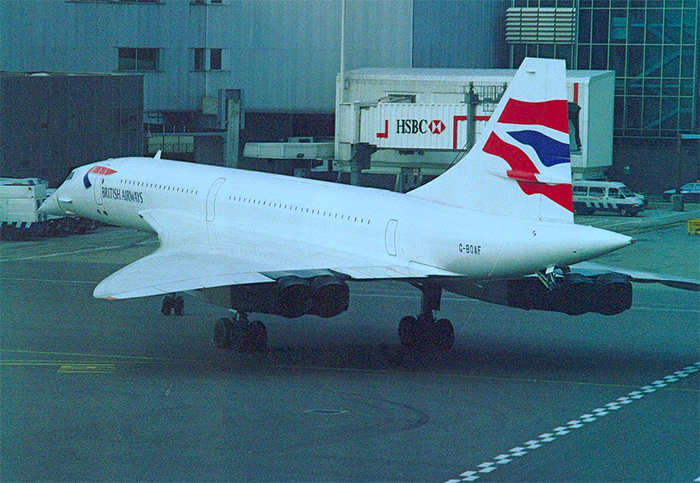
The last Concorde built, now on display at Filton.
After the Air France crash near Paris in July 2000, all Concordes were grounded and after modification were allowed to fly again in November 2001. With much fortuity while on a trip to Watford I heard on the radio that the first of the modified British owned Concordes was to make its first flight from Heathrow. As my journey was to take me around the M25 anyway, I made a slight detour onto the south perimeter road to watch it take off. It was sad that I would return to that spot about two years later to watch the British Airways Concorde land for the last time at Heathrow as they were withdrawn from service.